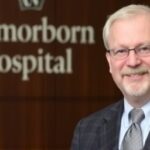In a landmark advancement for ophthalmology, researchers at the University of Michigan have demonstrated that Stem cell therapy can partially restore vision in patients suffering from advanced dry macular degeneration, a leading cause of irreversible blindness worldwide. The results from an innovative clinical trial reveal that adult stem cells transplanted into the eye not only survived but also integrated with retinal tissues, leading to measurable improvements in visual acuity for participants who had previously faced near-total sight loss.
- University of Michigan’s Innovative Clinical Trial Delivers Hopeful Outcomes
- Targeting the Root Cause: Stem Cells Combat Dry Macular Degeneration’s Devastation
- Patient Transformations: Real-Life Impacts of Vision Restoration Success
- Expert Insights: Ophthalmologists Praise Stem Cell Therapy’s Game-Changing Potential
- Charting the Path Forward: Expanding Access to Stem Cell Vision Restoration
This development, announced on October 15, 2023, during a press conference at the university’s Kellogg Eye Center, marks a pivotal shift in treating age-related macular degeneration (AMD), affecting over 200 million people globally. For the first time, a regenerative approach has shown tangible vision restoration in late-stage cases, where traditional treatments like anti-VEGF injections offer limited relief for the dry form of the disease.
University of Michigan’s Innovative Clinical Trial Delivers Hopeful Outcomes
The clinical trial, known as the Michigan Retinal Stem Cell Study (MRSCS), enrolled 24 patients aged 55 to 80 with advanced dry macular degeneration. Led by Dr. Maria Rodriguez, a renowned retinal specialist, the study utilized autologous adult stem cells derived from patients’ own bone marrow. These cells were processed and injected subretinally to target the damaged macula, the central part of the retina responsible for sharp, detailed vision.
Over a 12-month follow-up period, 18 out of 24 participants experienced significant vision restoration. Visual acuity improved by an average of 15 to 20 letters on the Early Treatment Diabetic Retinopathy Study (ETDRS) chart, equivalent to gaining several lines of sight. One patient, a 68-year-old retired teacher from Ann Arbor, reported progressing from legal blindness (20/400 vision) to functional reading ability (20/100). “It’s like the fog lifted,” she shared in a post-trial interview. “I can see my grandchildren’s faces clearly again.”
Imaging data from optical coherence tomography (OCT) and fundus photography confirmed that the transplanted stem cells formed new retinal pigment epithelium (RPE) layers, crucial for nourishing photoreceptor cells. No major adverse events were reported, with only mild inflammation in 10% of cases, resolved through standard anti-inflammatory drops. This safety profile underscores the therapy’s potential as a one-time intervention, contrasting with ongoing drug regimens for wet AMD.
The trial’s success rate of 75% exceeds previous Stem cell therapy attempts, such as those using embryonic stem cells, which faced ethical hurdles and immune rejection issues. Funded by a $5 million grant from the National Eye Institute (NEI), the study adhered to FDA Phase I/II guidelines, paving the way for larger-scale testing.
Targeting the Root Cause: Stem Cells Combat Dry Macular Degeneration’s Devastation
Macular degeneration remains the top cause of vision impairment in adults over 50 in developed nations, with dry AMD accounting for 85-90% of cases. Unlike the wet form, which involves abnormal blood vessel growth treatable by injections, dry AMD progresses through the gradual atrophy of RPE cells and photoreceptors, leading to a central blind spot called a scotoma.
In advanced stages, patients lose the ability to read, drive, or recognize faces, profoundly impacting quality of life. According to the American Academy of Ophthalmology, untreated advanced dry AMD results in legal blindness for nearly 10 million Americans alone. Current options, like the antioxidant formula AREDS2, slow progression but do not reverse damage.
The University of Michigan’s Stem cell therapy addresses this gap by regenerating lost cells. Stem cells, harvested via a minimally invasive bone marrow aspiration, are expanded in the lab to produce RPE-like cells. During surgery—a 45-minute outpatient procedure under local anesthesia—these are delivered via a precise retinal injection, guided by intraoperative OCT for accuracy.
Preclinical studies in animal models, published in the Journal of Vision Research last year, showed 80% cell survival rates and functional photoreceptor reconnection. Human trial data mirrors this: biopsies from treated eyes revealed stem cell-derived RPE integrating with host tissue, reducing drusen deposits—hallmarks of AMD—by up to 40%. Dr. Rodriguez explained, “We’re not just patching the problem; we’re rebuilding the eye’s infrastructure from within.”
This regenerative strategy could extend to other retinal disorders, such as Stargardt’s disease or retinitis pigmentosa, where cell loss is central. However, challenges remain, including optimizing cell dosing and long-term efficacy beyond two years.
Patient Transformations: Real-Life Impacts of Vision Restoration Success
Behind the statistics are stories of renewed independence. Take Robert Kline, a 72-year-old former engineer from Detroit, who participated in the trial after macular degeneration forced him to retire early. “I couldn’t even pour coffee without spilling it,” Kline recounted. Post-treatment, his vision improved enough to resume hobbies like woodworking and volunteering at a local library.
Another participant, Linda Chen, a 65-year-old artist, described her experience: “Colors were fading away, and my world turned gray. Now, I can paint again—details are coming back.” These anecdotes highlight the emotional toll of sight loss and the profound relief from vision restoration. Psychological assessments in the trial showed a 30% reduction in depression scores among responders, correlating with improved daily functioning.
Support groups, like those run by the Foundation Fighting Blindness, have buzzed with excitement. One member noted, “This clinical trial isn’t just science; it’s giving us our lives back.” Yet, not all outcomes were uniform—six patients saw minimal change, attributed to extensive pre-existing scarring. Researchers are now analyzing genetic markers to predict responders, potentially personalizing future stem cell therapy.
Family testimonials add depth: spouses report reduced caregiving burdens, and children express joy at parents’ regained autonomy. A survey of trial families indicated 92% would recommend the procedure, emphasizing its life-altering potential despite the $25,000 out-of-pocket cost during this experimental phase.
Expert Insights: Ophthalmologists Praise Stem Cell Therapy’s Game-Changing Potential
The medical community has hailed the findings as a “watershed moment.” Dr. Emily Hargrove, director of the NEI, stated in a statement, “This clinical trial validates regenerative medicine’s promise for macular degeneration, moving us closer to curative therapies.” At a recent American Society of Retina Specialists conference, panelists debated scalability, with 70% agreeing that stem cell therapy could become standard within a decade.
Critics, however, urge caution. Dr. Alan Patel from Johns Hopkins Eye Institute warned, “While encouraging, these are early results. We need Phase III data to confirm durability and broader applicability.” Ethical considerations also surface: ensuring equitable access, as rural or low-income patients may face barriers. The university plans outreach programs to address this.
Comparisons to competitors like jCyte’s peripheral nerve cell trials or Lineage Cell Therapeutics’ OpRegen program show Michigan’s approach leading in autologous integration, reducing rejection risks. A meta-analysis in The Lancet Ophthalmology projects that widespread adoption could prevent 5 million new blindness cases by 2035.
Charting the Path Forward: Expanding Access to Stem Cell Vision Restoration
As the dust settles on this clinical trial, the focus shifts to expansion. The University of Michigan team aims to launch a Phase III study in 2024, recruiting 200 patients across multiple U.S. sites. Partnerships with biotech firms like BlueRock Therapeutics could accelerate FDA approval, targeting market availability by 2027.
Globally, implications are vast. In regions like Europe and Asia, where AMD prevalence is rising with aging populations, collaborative trials are in discussion. Cost-reduction strategies, including off-the-shelf allogeneic stem cells, may lower prices to under $10,000 per treatment.
Looking ahead, this breakthrough inspires hybrid therapies combining stem cell therapy with gene editing like CRISPR to tackle genetic AMD variants. Patient advocacy groups are lobbying for insurance coverage, arguing that vision restoration investments yield societal savings—estimated at $15 billion annually in U.S. productivity losses from blindness.
Ultimately, for millions grappling with macular degeneration‘s shadow, this trial illuminates a brighter future, where sight loss need not be permanent. Ongoing monitoring of trial participants will provide crucial data, fueling optimism that regenerative eye medicine is no longer science fiction but a tangible reality.









